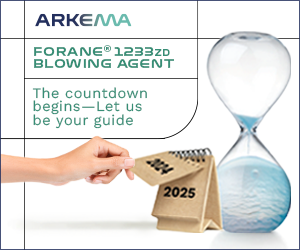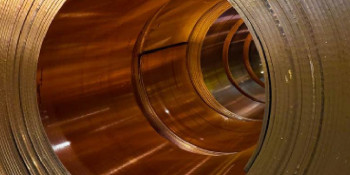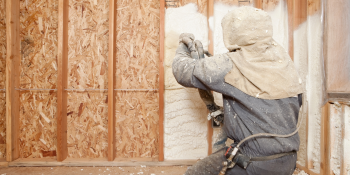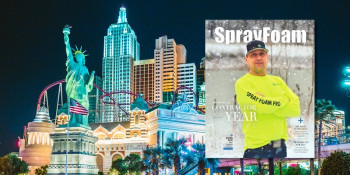Q&A Forums
Thermal Barrier Coating, Ignition Barrier of SprayFoam Uncovered Post New Topic | Post Reply
| Author | Comments |
|---|---|
|
Pedro Sunoco
Posted: Jan 07, 2011 09:34 PM
|
Thermal Barrier Coating, Ignition Barrier of SprayFoam Uncovered
I have a residential crawl space job my company has taken. There are utilities such as a furnace, piping, and electrical wires. I am looking at the various foams by different manufacturers, many of which say they do not need a thermal/ignition covering for use in non living spaces. Do I need to cover this foam or not?I have two competitors, one has told the homeowner an ignition barrier coating is required, the other is much cheaper and claims a coting is not required. What do we do? Thanks |
|
quentin
Posted: Jan 08, 2011 10:18 AM
|
Most but not all foams are rated for crawlspaces without a coating and unless it goes in to a basement or etc in a combined crawl/basement setup, then just make sure the foam is rated for use in crawls without a coating. |
|
Bryan Kwater
Posted: Jan 08, 2011 10:19 AM
|
It depends on the foam being used. If your foam has an ICC-ES report, it will say whether or not it needs to be covered, and at what thicknesses it can be applied. Most closed cell foam can be left exposed. I believe the reports are only valid for one year, so make sure that you have an updated report. |
|
Posted: Jan 08, 2011 10:20 AM
|
Hello Rooferfoam, There are foams (SPF) that have passed the new Ignition Barrier test, and which have ICC-ES reports that reflect this. The key for you in making a solid decision is the ICC-ES report. Make sure the foam you chose has such a report, which you can check at the ICC website. Make sure the "wording" in that report matches your job. This includes maximum foam thickness in the report, which you cannot exceed, as well as the density (2# or 0.5#) which must me the same as that named in the report. As I have mentioned many times on this forum, is can be very risky using any product that does not have ICC certification, because ICC is the single most complete and thorough organization that requires proof of accurate testing and proof of ongoing product quality as delivered to you. When a company provides you an ICC-ES report, you can look it up to verify using this link: http://www.icc-es.org/News/report_holders.shtml ...click on "Evaluation Reports", then click on "Search for a specific report", then enter the name of the company, or the report number if provided to you. Again, if the ICC-ES report does not check out... move on to another product. Good luck with your project. Mike Kiser |
|
Pedro Sunoco
Posted: Jan 08, 2011 11:25 AM
|
Thanks a ton! You guys are awesome on this site. It looks like we have convinced the homeowner to do their garage attic connected to second floor hallway as well. They use it for utility room / laundry, storage. Because there is "living space" activity here. Can we still leave uncovered / exposed w/o sheetrock to save $? Even with same ICC-ES report? Or is this a different usage / utilization that requires full blown Thermal protection? Thanks again. |
|
Posted: Jan 08, 2011 04:59 PM
|
As you noted, these are "occupied" spaces, and as such require a Thermal Barrier. In this case you will need a Thermal Barrier (sheetrock or equivalent), or a coating that has passed the proper tests as a system (applied over the specific foam you choose). FYI those tests are a Room Corner test (UL1715, NFPA286, or UBC26-3) and ASTME84 flame spread test. There is no foam that has legitimately passed one of these Room Corner tests to satisfy Thermal Barrier requirements without a coating. There are claims, but they are controversial, and in my opinion, will get you in trouble. As far as choosing products, as I said in the previous reply, look for an ICC-ES report, and only choose a "system" based on that. Again, you must read the report carefully, making sure you use the right density of foam, are not over the maximum thickness of foam, and then apply the proper mil thickness of the designated coating. Follow all guidelines within the ICC-ES report. The decision to use a coating can also depend on the cost of sheetrock or equivalent, and associated labor vs. the coating, labor, etc. This area can get complex, but if you rely on ICC-ES reports, it makes decisions pretty straight forward. Mike Kiser |
|
John Stahl
Posted: Feb 04, 2011 04:00 PM
|
Although I think Mike is providing reasonably good guidance regarding thermal barriers and ignition barriers, I think it very important to indicate that ICC Evaluation Service Reports (ESRs) are just one of several documents a code official can review to confirm products meet the building code for a specfic application. Virtually all the thermal barriers and ignition barriers are tested and qualified by full-scale, room fire tests. As long as the code-authorized fire tests are conducted by a fire testing organization accredited by the International Accreditation Service (part of the ICC) to conduct the specific fire tests, the test data is considered technically correct and acceptable. In addition, the codes require a third-party agency, also accredited by the IAS, to conduct frequent inspections of the manufacturer's facility to verify the product is manufactured under a written quality control program to assure the product is the same as that fire tested. Such third parties provide a Listing of such products that assures the code official the products conform to code requirements. In addition, a Label indicating the specific fire performance ratings as listed by the third party is required to be affixed to every container delivered to the job site so the code official can verify the fire rating and code compliance. As far as fire performance is concerned, any product that is " Listed and Labeled" is generally accepted by code officials since it is this same information the ICC Evaluation Service uses and requires for their ESR reports. In summary, ESR Reports may be helpful but are absolutely not required to show code compliance. |
|
John Stahl
Posted: Feb 04, 2011 04:03 PM
|
Mike is incorrect in his statements "There is no foam that has legitimately passed a room corner test to satisfy thermal barrier requirements without a coating. There are claims, but they are controversial, and in my opinion, will get you in trouble." As shown on their website www.stayflex.com, Staycell ONE STEP? Monolithic and Hybrid Systems manufactured by Preferred Solutions, Inc. (PSI) have passed the UL 1715 large-scale room fire test specifically authorized by the International Building Code and International Residential Code. These are the first and only spray foam products in North America that are code compliant for occupied and unoccupied spaces without thermal barriers or ignition barriers. If you look at the Technical Data Sheets on these products, you will see such products are listed and labeled by Quality Auditing Institute as having the fire performance and ratings required by codes and can be left exposed when installed in accordance with the test data. |
|
Posted: Feb 04, 2011 06:42 PM
|
yes indeedy,, staycell 255 can be left exposed,,, been that way for over a year,,, |
|
Posted: Feb 25, 2011 05:28 PM
|
Hello everyone. My apologies for my long absence, but it could not be helped as I have been fighting a year-long health battle, to keep my eyesight intact (a battle I wouldn't wish on anyone!). Anyway, I am out of the woods now, and finally beginning to catch up with things, like this forum. I see there has been some good discussion about a few issues while I was out, and I would like to chime in on a couple. First of all, this one. My earlier statement to be careful about claims like this is based on something I wrote about at length in my first segments on this forum, regarding proper testing methods. The claims for this foam that does not need a Thermal Barrier is based on two separate tests, one with foam on walls only, and one with foam on ceilings only. (unless something brand new is out that I have missed!) As such, this reduces the severity, and therefore the difficulty of passing this test TREMENDOUSLY! If you look at my earliest discussion about this, in brief it outlines the facts: In a “complete” SPF room test, the walls begin to off-gas and ADD fuel (and heat) to the fire in the corner. A LOT of fuel & heat. This magnified heat then hits the ceiling after 2-3 minutes and becomes very, very aggressive against the ceiling in the corner. The foam on the ceiling is then really taking a beating, so to speak. It is this COMBINATION of the heat of the burner (or crib) PLUS the added gasses from the wall foam, that funnels up to the ceiling and really tends to get the ceiling foam involve quickly, sometimes within seconds, adding even more gas (again) from THAT "ceiling" foam, further increasing the fuel and heat. Add the high turbulence created by all this, and it is really something to see. More importantly, it is really tough for the foam to survive. With only sheetrock on the walls, the ceiling is getting hit with much, much less heat. Likewise, if there is sheetrock on the ceiling, and foam on the walls, the foam does give off gasses and heat up like it should, but when it hits the ceiling (sheetrock), there is no foam there to ADD to the fuel & heat, plus, there is nothing to SPREAD the flames away from the corner, which is what determines a failure. The fire will get very big, but will stay in the corner. Flames won’t travel the 8 feet across that sheetrock ceiling. NOW, if you put that same foam on BOTH wall and ceilings, the combination will probably DOUBLE the heat challenge overall, and cannot perform similarly. That is why I am saying, in my “opinion”, there is a problem, and this style of testing has a high risk of not passing the scrutiny of ICC. Now, don't get me wrong. I am not saying this way of testing does not qualify for anything. It does. It should be approved for use on either walls only... or ceilings only. Never both in the same space. ALSO, if the SPF is on the walls, the ceiling must be sheetrock or equal (per the code). OR, if the SPF is on the ceiling, the walls must be sheetrock or equal (again, per the requirements of the code - to emulate the construction configuration used in the test). It’s good to be getting back into the swing of things, and doing what I signed on for on this forum. As Joan Rivers used to say… Can we talk? |
|
Caleb DeFord
Posted: Mar 10, 2011 01:52 PM
|
Mike, Thanks for sharing your knowledge with us. You are the first guy I heard explain the tests and codes in such a helpful and clear way. Thanks a million. |





























